Imagine transforming your backyard garden into a charming retreat with a rustic shelter that not only adds character but also serves as a practical haven from the elements. Whether you’re new to outdoor projects or have a seasoned green thumb, creating your own DIY rustic shelter can be a fulfilling endeavor that enhances both the aesthetic and functional appeal of your outdoor space.
In this article, we’ll guide you through the essentials of building a rustic shelter that complements your garden’s natural beauty while offering a cozy spot to unwind. From selecting the right materials to simple construction techniques, you’ll gain the skills and confidence needed to craft a personalized outdoor sanctuary that reflects your unique style. Let’s explore how you can blend creativity with practicality to make your backyard the ultimate escape.
Choosing Sustainable Rustic Materials
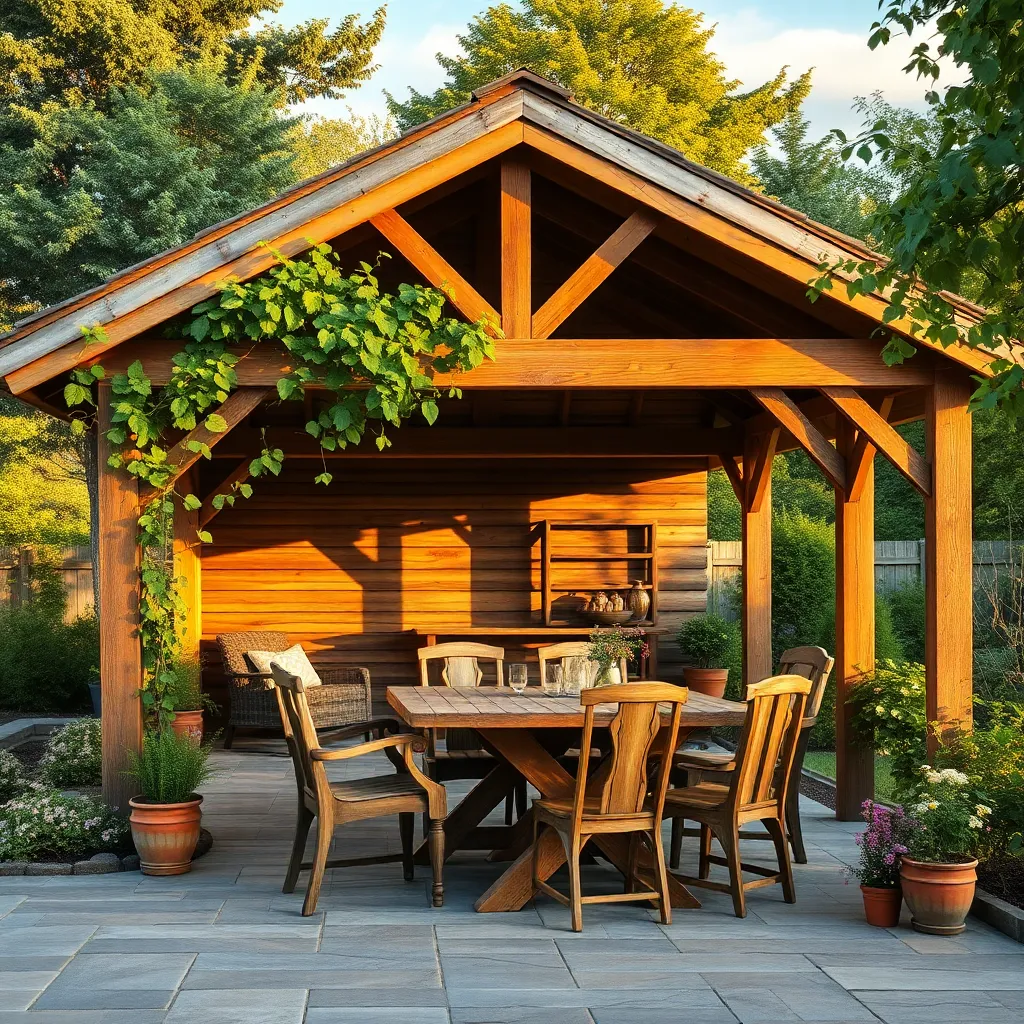
When choosing materials for a rustic garden shelter, consider options that are both sustainable and visually appealing. Reclaimed wood, such as barn wood or pallets, offers a charming weathered look and reduces environmental impact. For a more durable option, use bamboo, which grows quickly and is incredibly strong. These materials not only harmonize with natural settings but also require minimal processing, making them eco-friendly choices. Beginners can start with simple designs using these materials, while more experienced builders might incorporate complex joinery techniques for added stability.
Incorporating natural elements like stone or clay can enhance the rustic feel while providing durability. Consider using fieldstone for the base of your shelter to create a solid foundation that blends seamlessly with the landscape. For roofing, thatched materials like straw or reed can offer an authentic rustic appearance while providing excellent insulation. To ensure longevity, apply natural sealants to protect these materials from the elements. By thoughtfully selecting these sustainable materials, you can create a rustic garden shelter that is both beautiful and environmentally responsible.
Designing Cozy Backyard Retreats
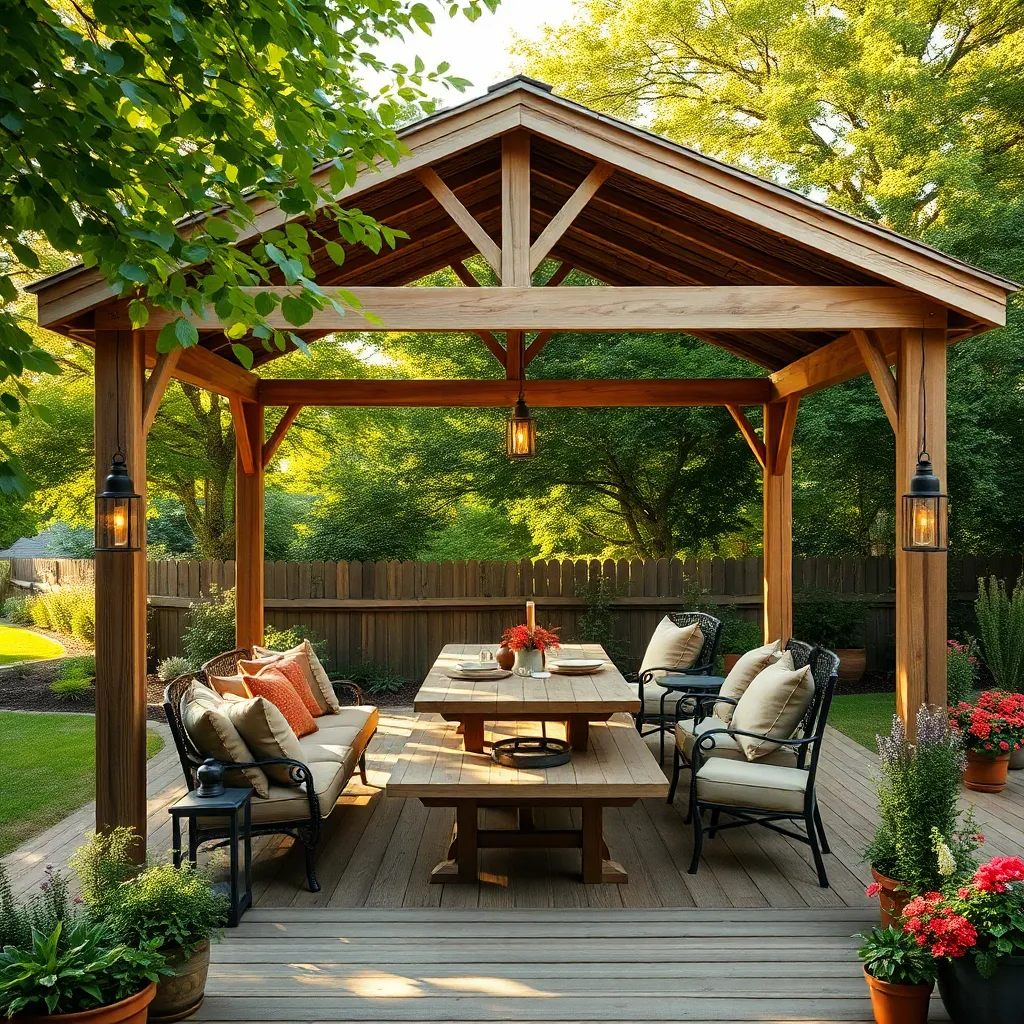
Creating a cozy backyard retreat begins with choosing the right design elements that blend functionality and style. Start by selecting a sheltered area, such as a pergola or a gazebo, using weather-resistant materials like cedar or treated pine. For beginners, consider a simple pergola with a basic frame structure, which can be enhanced with climbing plants like wisteria or jasmine to provide natural shade and a rustic aesthetic. For those with more experience, adding features like a stone or brick fireplace can elevate the space, offering warmth and ambiance.
To enhance the coziness, focus on furnishing and decor that invites relaxation. Opt for durable outdoor furniture made from teak or wrought iron, which can withstand the elements while maintaining a charming rustic look. Layer the seating area with soft cushions and weather-resistant throws in earthy tones to create an inviting atmosphere. Advanced designers might incorporate solar-powered lighting fixtures or lanterns to add a magical glow in the evenings, making the retreat usable at any time of the day or night. Remember, the key is to fuse comfort with nature, ensuring your backyard retreat is both practical and aesthetically pleasing.
Step-by-Step Shelter Construction
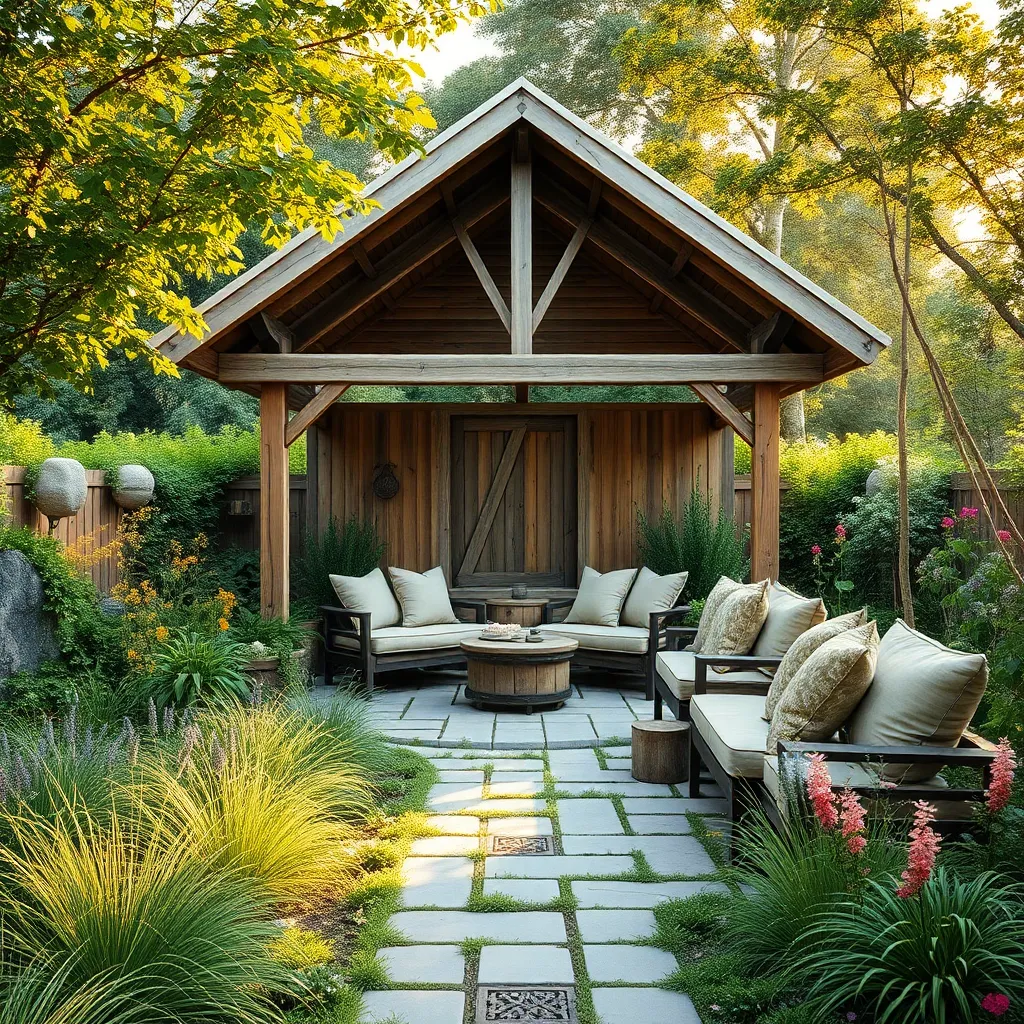
To begin constructing your rustic backyard shelter, start by choosing durable, weather-resistant materials such as cedar or redwood, known for their resilience and natural beauty. Measure the area where your shelter will stand, ensuring it fits comfortably within your garden space. For a basic structure, consider using 4×4 posts for the frame, spaced roughly 6-8 feet apart, to provide both stability and an open feel. Beginners can opt for a simple slanted roof using corrugated metal or polycarbonate sheets, which are easy to install and offer excellent protection against the elements.
For those ready to take on a more advanced project, incorporate design elements like a stone or brick base to add both charm and structure. Include decorative features such as lattice walls or trellises to support climbing plants, enhancing the rustic appeal. Ensure you anchor your posts properly using concrete footings to withstand various weather conditions.
- Use galvanized screws and brackets for enhanced durability.
- Consider adding solar-powered lights for a sustainable and atmospheric touch.
With these tips, your backyard will boast a cozy, inviting shelter that blends seamlessly with its natural surroundings.
Incorporating Natural Garden Elements
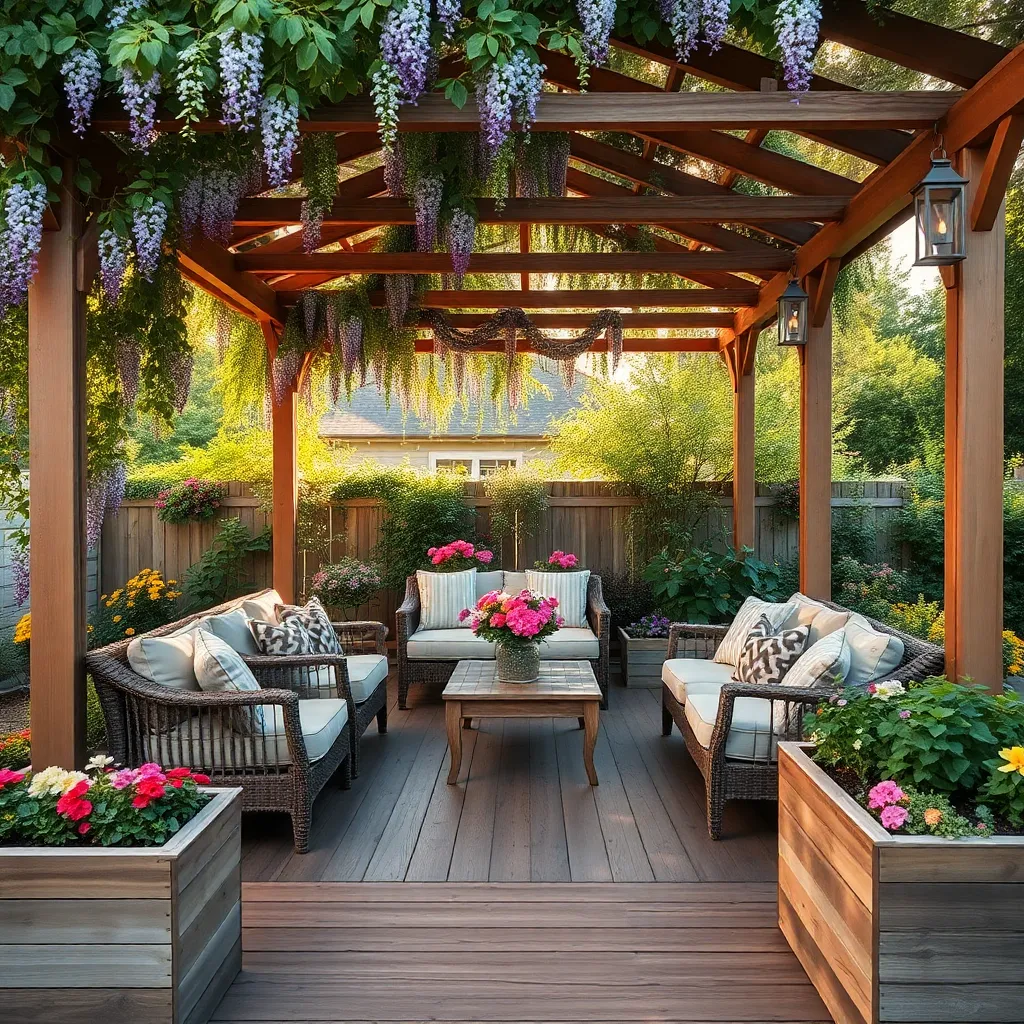
To seamlessly blend your rustic shelter with the surrounding landscape, consider using natural garden elements like vines or climbing plants. These can be trained to grow along the sides or roof of your shelter, providing both shade and a living, green aesthetic. Choose fast-growing varieties such as clematis or honeysuckle for a quick effect, and ensure you install sturdy trellises or wire mesh to support their growth. Beginners can start with a small section to get the hang of it, while more advanced gardeners might design intricate patterns or combine different plants for seasonal color variation.
Using natural materials for your shelter’s structure, such as reclaimed wood or stone, adds an authentic rustic charm. For a more advanced touch, consider incorporating a living roof with succulents or moss, which not only enhances the shelter’s insulation but also its biodiversity. Ensure the structure can support the additional weight, and use a waterproof layer beneath the planting medium to prevent damage. Beginners might start with a simple wooden frame and clay pots to get familiar with the materials, while experienced DIYers can explore more complex designs incorporating these natural elements.
Enhancing Shelter with Rustic Decor
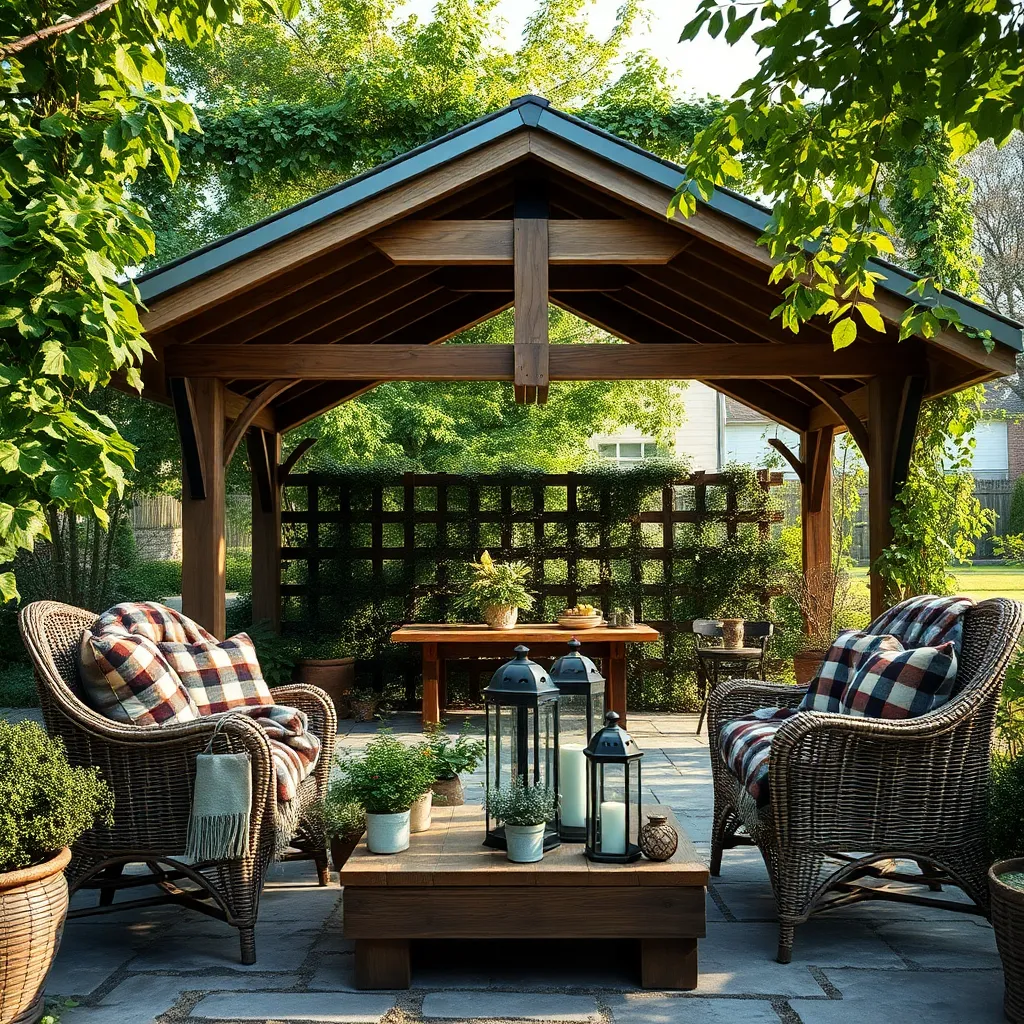
Enhancing your outdoor shelter with rustic decor can transform your garden into a charming retreat. Start by incorporating natural wood elements, such as reclaimed barn wood or weathered pallets, to construct features like benches or tabletops. For beginners, using untreated wood is a great choice as it weathers beautifully over time, adding to the rustic charm. Advanced DIYers might consider incorporating a distressed finish or a whitewash effect to give your wood structures a more aged look.
To further emphasize the rustic theme, consider adding textured accents such as burlap curtains or rope-wrapped beams. These materials are not only affordable but also easy to work with, making them ideal for any skill level. For a cozy touch, place vintage lanterns or mason jar lights around the shelter to create a warm, inviting ambiance. Additionally, using a palette of earthy colors like moss green or terracotta can seamlessly blend the shelter with your garden’s natural elements, enhancing its rustic appeal.
Conclusion: Creating Beautiful Outdoor Spaces
In exploring the enchanting world of DIY rustic shelters for your backyard garden, we’ve uncovered five key relationship concepts that intertwine beautifully with the art of building: communication, collaboration, patience, creativity, and support. Each project becomes a testament to the power of working together, where open dialogue and shared vision strengthen bonds. As you embark on these delightful DIY endeavors, remember the importance of patience and creativity in overcoming challenges, and lean on the unwavering support of your partner to bring your shared dreams to life.
To turn inspiration into action, choose one DIY project from the article to start with your partner this weekend. This small step will not only enhance your garden but also nurture your relationship.
Remember, every project completed is a memory crafted together. Bookmark this article as a cherished resource, and revisit it whenever you seek a boost of creativity or relationship guidance.
Looking ahead, let these rustic creations be symbols of your relationship’s growth and resilience. With each nail hammered and seed planted, you’re building not just shelters, but a future filled with love and collaboration. Embrace this journey and watch your relationship blossom in unexpected and beautiful ways.
